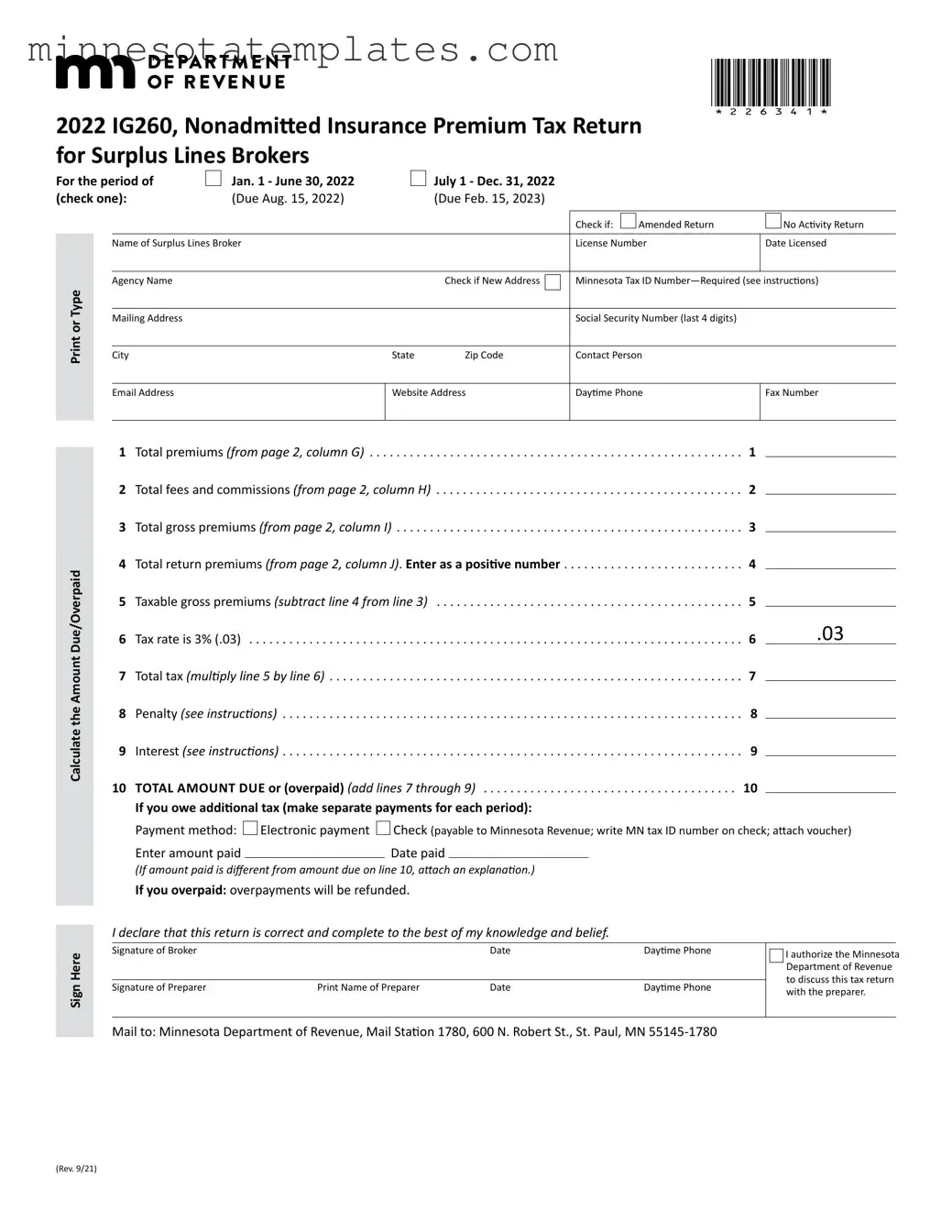The Minnesota IG260 form is an essential document for surplus lines brokers who deal with nonadmitted insurance. This form must be filed semiannually, covering two distinct periods: January 1 to June 30 and July 1 to December 31. Each period has its own due date, with the first due by August 15 and the second by February 15 of the following year. Even if there is no activity or tax liability to report, brokers are still required to submit this form. The IG260 collects crucial information, including the total premiums, fees, and commissions, as well as taxable gross premiums. A tax rate of 3% applies to the taxable gross premiums, and brokers must calculate the total tax due, including any penalties or interest for late payments. Accurate reporting is vital, as brokers are held accountable for their filings. Additionally, the form requires a Minnesota tax ID number, which is distinct from a Social Security number. This ensures that all brokers are properly registered for tax purposes. Understanding the nuances of the IG260 form is critical for compliance and to avoid potential penalties.
